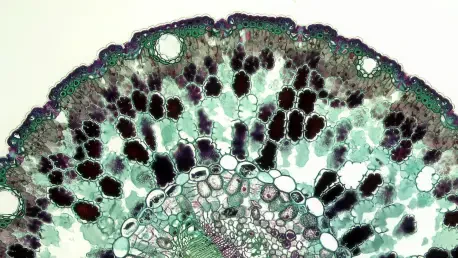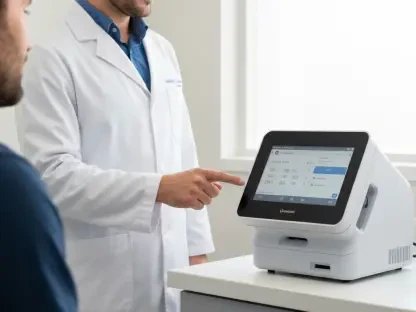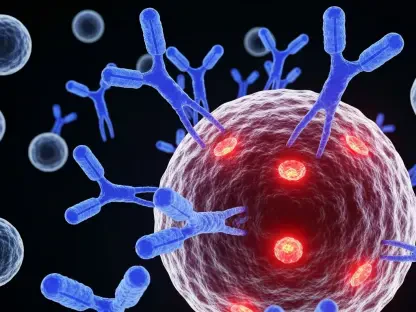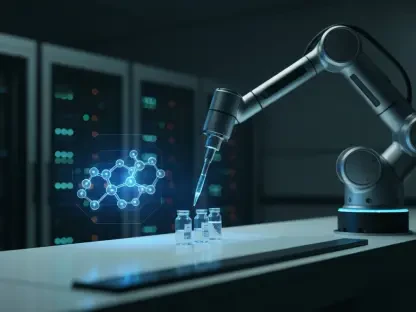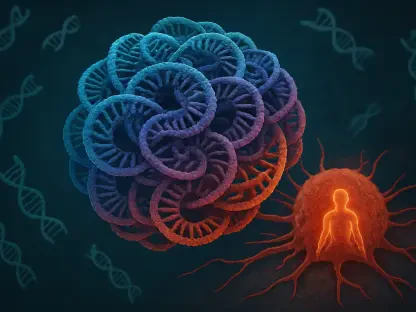The world of regenerative medicine has been animated by a remarkable breakthrough in tissue engineering, involving the creation of liver organoids capable of developing their own vascular systems. Emerging from a collaborative effort between scientists at Cincinnati Children’s Hospital Medical Center and their partners in Japan, this innovation has the potential to reshape the future of transplantable organs. The incorporation of blood vessels into lab-grown liver tissues marks a significant milestone, offering new avenues for medical applications and enhancing the organoids’ biological functionality. This development not only addresses a critical limitation in the field but also paves the way for groundbreaking therapies, especially for disorders related to coagulation.
Stem Cell Technology and Tissue Engineering
The Role of Induced Pluripotent Stem Cells
In a pivotal intersection of stem cell technology and tissue engineering, researchers have utilized induced pluripotent stem cells (iPSCs) to synthesize liver tissues with intricate vascular networks. These complex biological structures closely mimic the natural vasculature found within human livers, which has historically been a challenging feat for scientists. This challenge historically hindered the maturity and functionality of laboratory-generated tissues, thereby restricting their wider applicability in medical treatments. The creation of these complex vascular networks within organoids represents a dynamic shift, as prior efforts often struggled to accurately replicate the intricate networks found within true human organs.
The technique employed by the researchers incorporates iPSCs to develop CD32b+ liver sinusoidal endothelial progenitors (iLSEPs), a specialized form of precursor cells crucial for orchestrating the formation of liver blood vessels. By using these progenitors, the team successfully cultivated an environment conducive to the self-organization of cells into intricate tissue structures complete with operational blood vessels. This achievement was made possible through an innovative inverted multilayered air-liquid interface (IMALI) culture system. As a result, the organoids not only integrate with existing biological pathways but also exhibit a greater capacity for growth and maturity, demonstrating their true potential.
Achievements in Tissue Maturation and Function
Building upon this foundation, the researchers have unlocked the possibility of enhancing the organoids’ maturation and functional capabilities, offering a more authentic approximation of liver tissues. This breakthrough in vein creation represents more than a technological triumph—it serves as a proof of concept for how critical spatial arrangements and developmental timing can drive the success of tissue engineering. The vascular networks generated promote the diffusion of nutrients and oxygen throughout the organoids, directly influencing their viability and longevity. Such advances are important in accelerating the clinical applicability of these bioengineered tissues, which have the potential to greatly transform existing medical therapies.
The inclusion of blood vessels within these liver organoids has profound implications, as the quality of vascularization significantly impacts the maturation and functional characteristics of the engineered tissues. Effective nutrient transport within the lab-grown tissues underpins their ability to sustain prolonged biological activities. With the more developed hierarchical structures facilitated by the iLSEPs, the organoids exhibit improved physiological traits closer to human liver tissues. These advancements underscore the immense promise held in mastering the ‘vessel code,’ thereby revolutionizing the regenerative and transplantative capabilities within the field.
Therapeutic Potential and Clinical Impact
Correcting Hemophilia and Coagulation Disorders
A key finding of this study is the organoids’ ability to produce blood-clotting factors vital for individuals with coagulation disorders, such as hemophilia A. Tests showed that the liver organoids successfully secreted proteins like Factor VIII, which is notably deficient in patients with hemophilia. When the organoids were tested on mice engineered to exhibit hemophilia-like symptoms, they managed to correct severe bleeding conditions. This suggests that these organoids could serve as a revolutionary treatment option, offering a regenerative therapy that reduces reliance on external Factor VIII supplements.
Beyond producing Factor VIII, the organoids also generated a variety of other proteins necessary for normal coagulation. This broad capability presents a strategic advantage, offering a multifaceted approach to treating various clotting disorders. The successful implementation in animal models indicates that researchers are closing in on viable human applications. If scalable, such bioengineered tissues could serve as essential sources of necessary proteins, reducing the need for traditional blood clotting treatments and potentially obviating the need for complete organ transplants. These advancements could eventually significantly impact the quality of life for individuals affected by coagulation-related disorders.
Broader Implications for Liver Treatment
The implications of these advancements extend beyond treating hemophilia and address broader liver-related diseases and deficiencies. The ability to grow functional liver tissues with integral blood vessels offers hope to patients suffering from liver diseases who have not responded well to conventional treatments or who lack access to advanced therapeutic options, such as gene therapy. The organoids could eventually act as biological factories, synthesizing essential proteins and supporting regeneration of liver function, offering a less invasive treatment option compared to traditional organ transplants.
Even as the scalability of these organoids for direct therapeutic use in humans remains a challenge, the progress represents a critical step forward. The research embodies a triumph in merging cutting-edge stem cell biology with innovative culture systems. By developing these complex tissues, scientists have opened new pathways for drug testing and disease modeling. The research underscores not only the enormous potential for practical clinical applications but also the transformative possibilities within regenerative medicine that make whole organ transplants less necessary.
Future Directions and Industry Significance
Modeling Human Diseases and Biological Processes
Beyond their immediate therapeutic potential, the vascularized liver organoids offer substantial contributions to modeling human biology and diseases. They serve as sophisticated models for exploring complex intracellular interactions and pathways that were once challenging to replicate outside a living organism. By incorporating functional vascular systems, these organoids allow researchers to investigate multifaceted biological processes more accurately, facilitating the development of potential treatments. This advancement broadens the scope of scientific exploration by providing new resources to study the mechanisms underlying liver biology and related diseases on a micro scale.
With these technological leaps opening doors to advanced modeling, the field is poised to gain deeper insights into liver diseases’ pathogenesis and progression. By enhancing organoids’ functional capacity, researchers can explore dynamic interactions in diverse conditions, assessing responses to new therapies with greater precision. This offers immense potential for accelerating the pace of drug discovery and personalized medicine. Moreover, the comprehensive nature of vascularized liver organoids breaks ground for studying systemic impacts of liver failure and regenerative processes, allowing for broader extrapolation to other organs and systems in the body.
Scaling Challenges and Future Prospects
While the development of functional vascularized liver organoids marks an exciting frontier in regenerative medicine, challenges remain, particularly regarding their scalability for mainstream clinical applications. Achieving this would necessitate overcoming hurdles related to mass production, cost-efficiency, and ensuring the stability of organoids over extended periods. As researchers refine the methodologies involved, collaborations across interdisciplinary fields will be crucial in optimizing these processes for eventual mass-market adoption. Advancements in bioreactor technologies and automation could pave the way toward large-scale production of these organoids.
The insights generated through this endeavor are setting the stage for a new era in tissue engineering and regenerative medicine. The focused collaboration exemplified in this research epitomizes the kind of concerted efforts required to push the boundaries of modern medicine. As this field continues to evolve, it invites ongoing discourse surrounding ethical considerations, regulatory frameworks, and the equitable dissemination of such groundbreaking technologies. By laying the groundwork for future innovations, this research holds the promise of transforming not only treatment paradigms but the entire landscape of how organs are understood and utilized within medical sciences.
Paving the Path Forward
The arena of regenerative medicine has been invigorated by an extraordinary advance in tissue engineering: the creation of liver organoids that can develop their own vascular systems. This innovation emerged from a collaboration between researchers at Cincinnati Children’s Hospital Medical Center and scientists in Japan. It holds promising potential to transform the future of organ transplants. Integrating blood vessels into lab-grown liver tissues represents a pivotal advancement, creating new possibilities for medical applications and boosting the biological functionality of these organoids. By addressing a critical limitation in existing methods, this breakthrough opens the door to revolutionary therapies, particularly for blood-related disorders such as coagulation issues. The success of this endeavor could herald a new era where organ shortages are reduced, and conditions that currently offer limited treatment options are managed more effectively, ultimately saving countless lives and improving the quality of care in the medical field.
